METROPOLITAN CORRECTIONAL CENTER
Metropolitan Correctional Center
Date: 1975
Architect: Gruzen & Partners
Address: 150 Park Row
Use: Federal Jail
Metropolitan Correctional Center drawing, (Gruzen & Partners)
The Metropolitan Correctional Center (MCC) was the final piece of the monumental Civic Center development that included One Police Plaza, Murray Bergtraum High School, 350 Pearl Street, Chatham Towers and Chatham Green. Part of a federal program that commissioned additional jails in Chicago and San Diego of the same name, Metropolitan Correctional Center in Manhattan replaced the former Federal House of Detention at 427 West Street at West 11th Street. According to The New York Times architecture critic Paul Goldberger, unlike the West Street jail and the Tombs up the block, MCC was supposed to be “the most progressive” and “incorporate the most advanced theories of prison architecture.. each unit is meant to stress human scale. ”(Paul Goldberger, New York Times, 1971)
Owned and operated by the Federal Bureau of Prisons, MCC's official mission is to "serve federal courts in the Southern and Eastern Districts of New York by providing pre-trial detention in conjunction with the U.S. Marshals Service (USMS)." Over the years, MCC has become overcrowded, the 12-story prison was originally designed to house 480 inmates (men and women) but has increased to 795 in recent years. Inside, MCC is organized around units of eight small, single-occupant cells. According to Goldberger,
“each end of each residential floor contains six groups of eight rooms, arranged split‐level around a large central double‐height lounge space. The physical arrangement permits a sense of privacy and yet allows for close security since all 48 prisoners can be observed from the lounge space... The rooms themselves are Spartan, but comfortable — there is excellent wood furniture (built by inmates of the Federal prison system) that resembles the simple wood furniture popularized by such places as the Workbench years ago. Unbreakable glass covers the windows, and the overall sense is as much that of a new college dormitory room as that of a prison cell.” (Paul Goldberger, New York Times, 1971)
Prisoners are assigned to one of these self-contained units, the most notorious and secure being MCC’s 10-South wing, which houses the most dangerous inmates including terrorism suspects. Restricted from any human interaction, 10-South inmates are held in solitary confinement where the fluorescent lights remain on all day. The frosted glass windows offer no view of the outside world and the inmates often develop problems with their vision due to the inability to see distances.
The complex was created to house federal pretrial inmates, or occasionally inmates serving short sentences, broken up into self-contained wings. With its close proximity to City Hall and the Brooklyn Bridge, the building was designed to mold into its surroundings with no barred windows and minimum barbed wire. The design was heralded for its lack of prison-looking elements including guard towers, barbed wires, chain-linked fences and large windowless walls, fitting in with the surrounding office buildings. But do not mistake the appearance, as MCC is a highly secure facility that has been referred to as "Little Gitmo" because of the terrorism suspects housed inside its concrete walls.
Despite complaints about the heat in the summer, the facility was intended to be air-conditioned so it could use thick unbreakable plastic panels for the windows instead of bars. The exterior is clad in striated precast concrete, with horizontal rows of dark windows, and a caged recreational area on the roof. The $23 million prison sits adjacent to the Municipal Building and One Police Plaza behind Cass Gilbert's 1936 Federal Courthouse in Foley Square, which it is connected to underground as well as by two elevated tunnels. The west wing of the building houses the United States Attorney’s Office with the same precast concrete façade, but larger glass windows. The two are connected by a subway electrical sub-station.
The Civic Center Complex. NYC Urbanism, 2017.
MCC has housed famous federal inmates over the years including drug lord El Chapo, Jeffrey Epstein, Bernie Madoff, John Gotti, terrorist Omar Abdel-Rahman and Khalid Sheikh Mohammed, the self-proclaimed mastermind of the September 11, 2001 terrorist attacks. There have also been escape attempts over the years, the most publicized being in 1981 when a stolen helicopter unsuccessfully attempted to lift an inmate off the rooftop recreational center. Another attempt, this one successful, involved two inmates lowering themselves down from the second-story with an electrical cord. The men remain missing to this day.
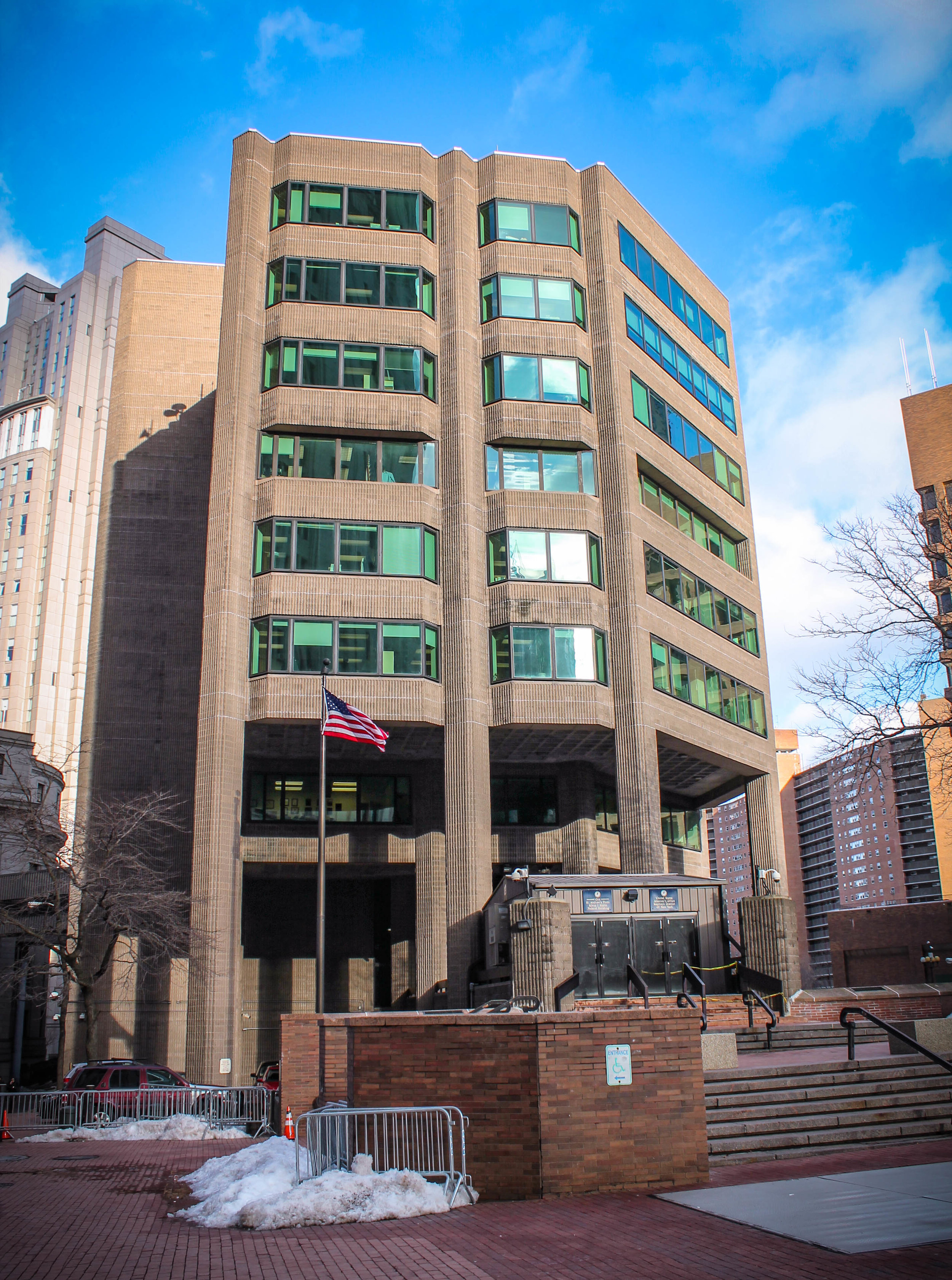
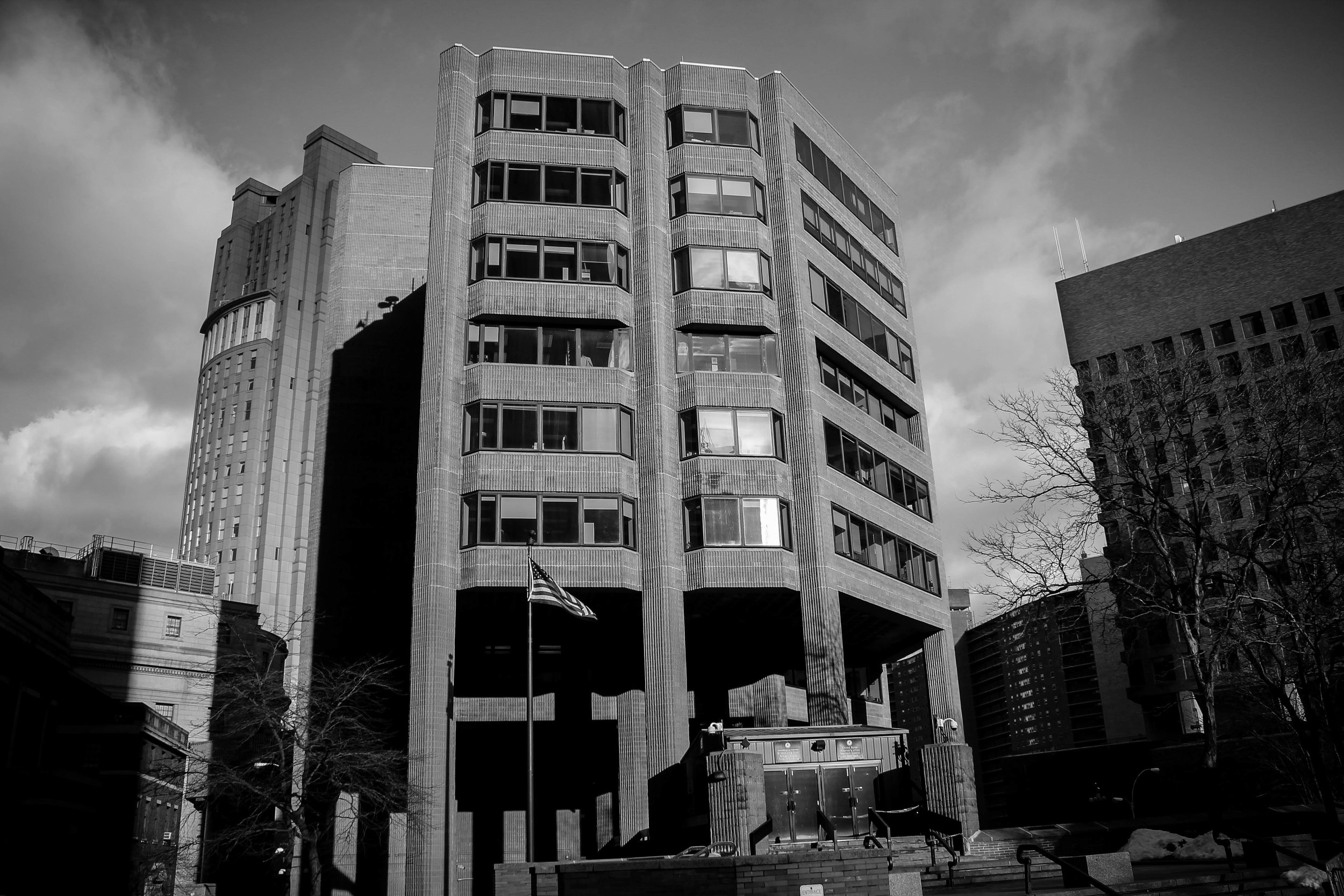
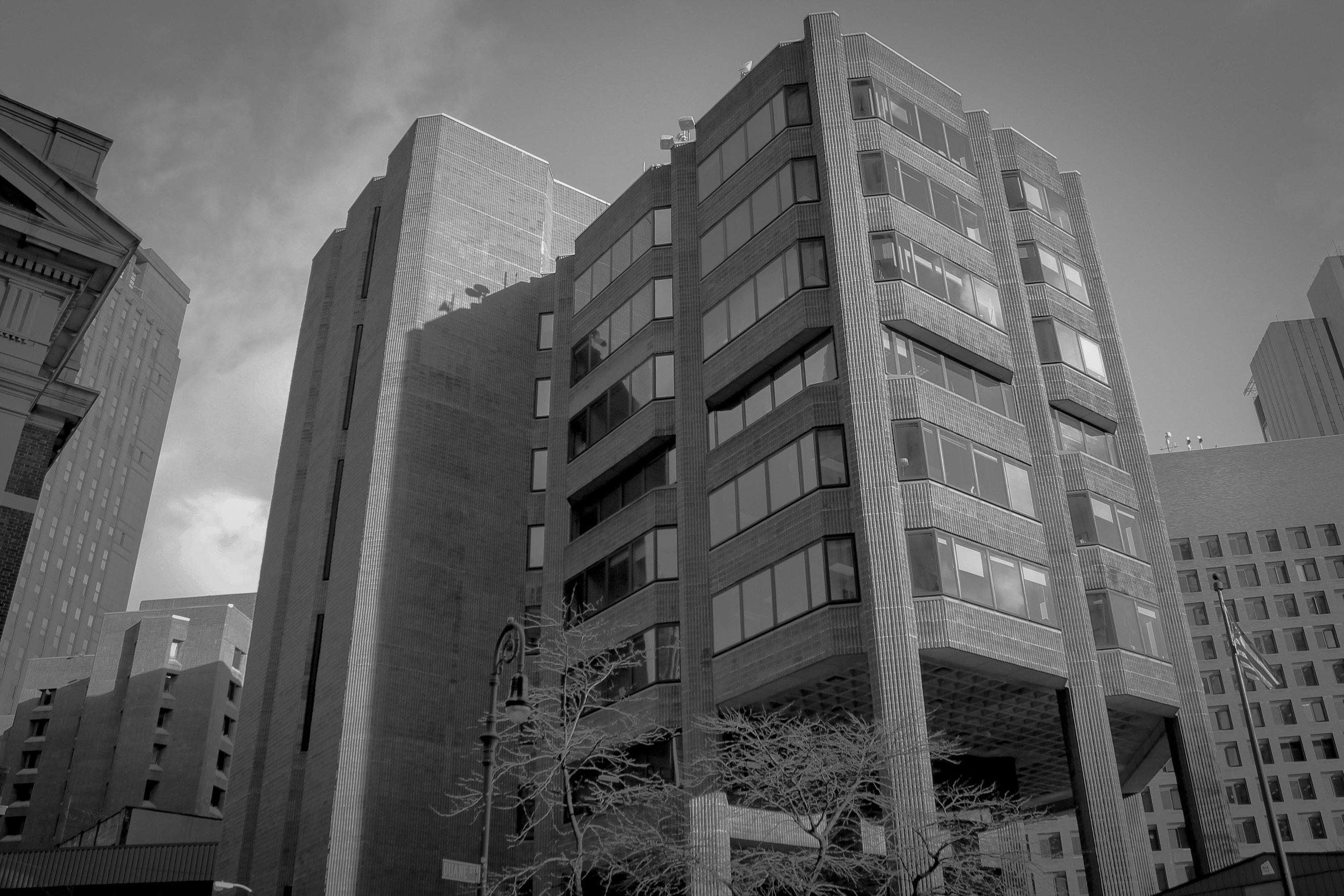
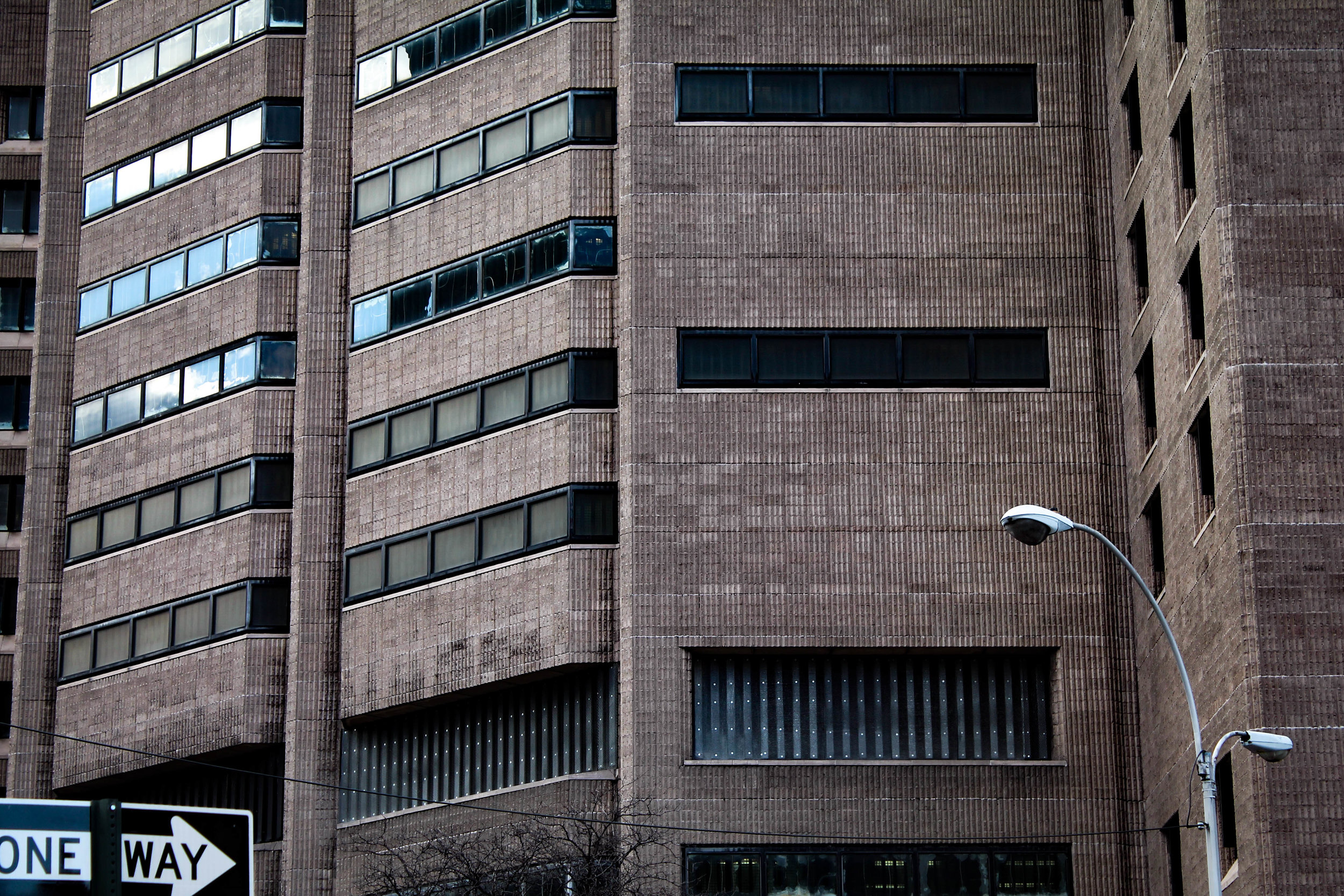
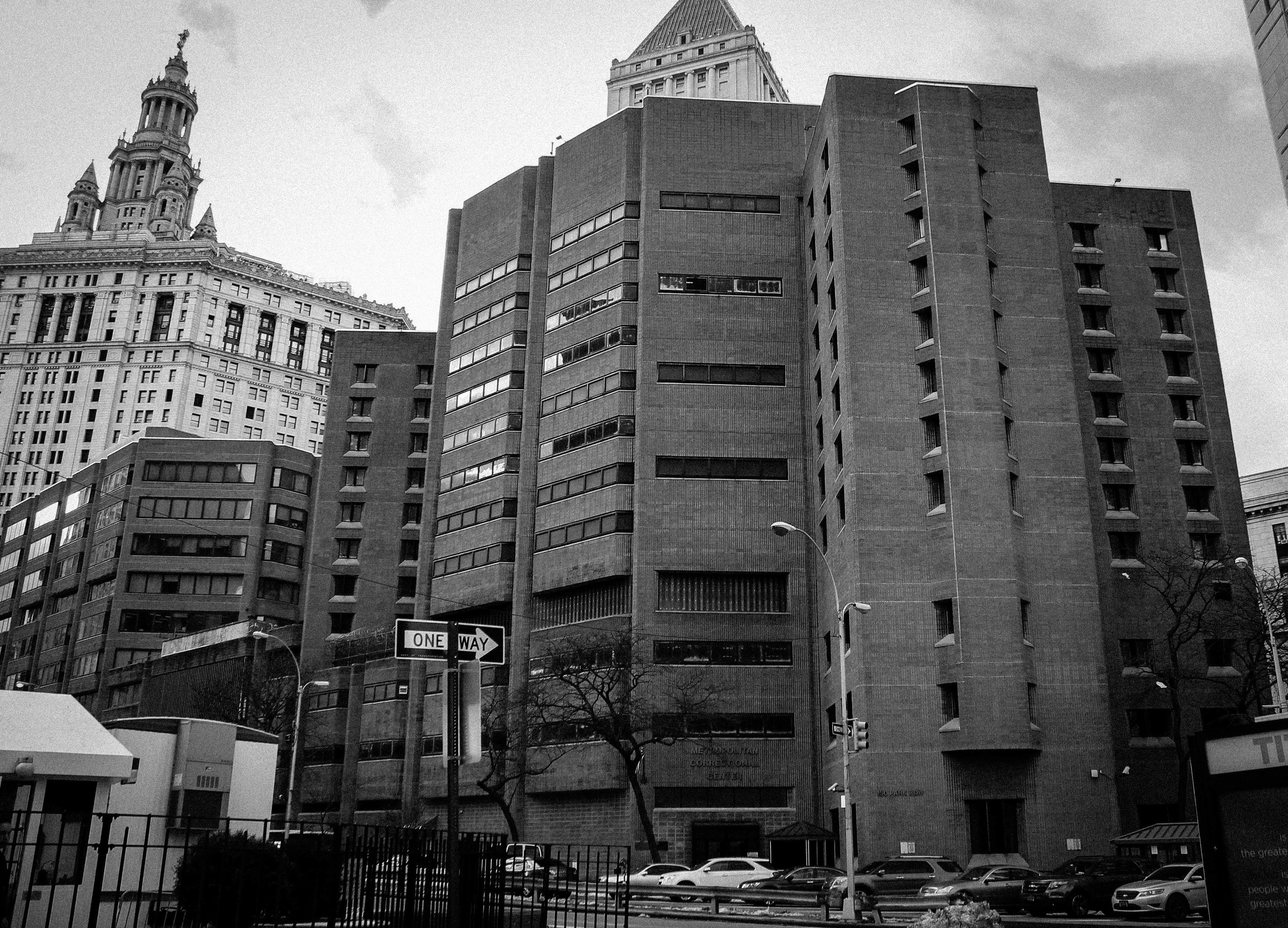
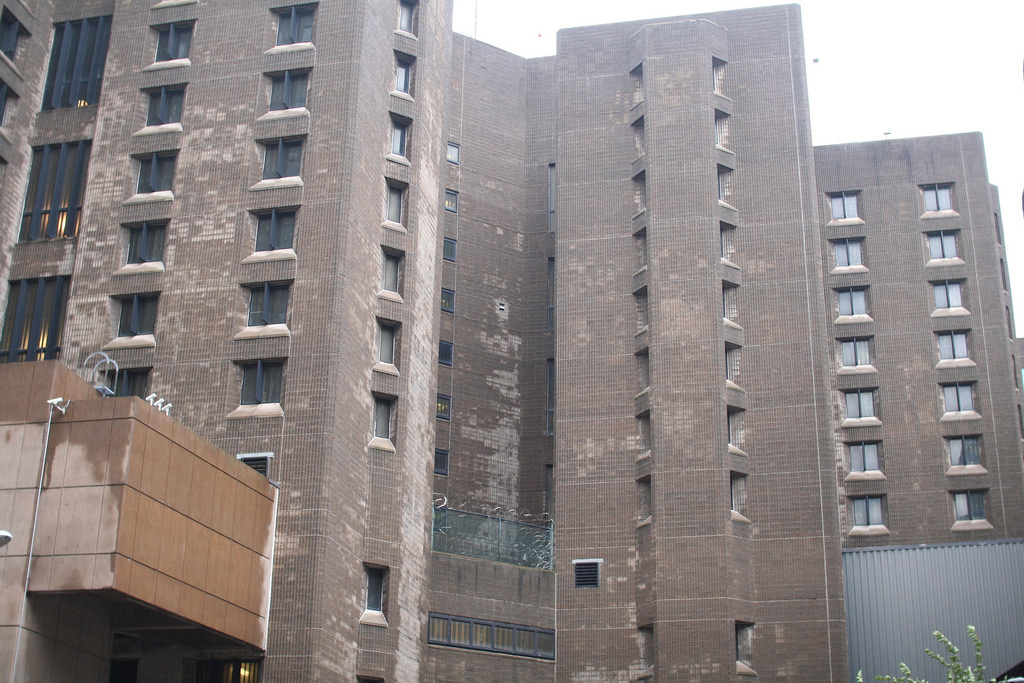
Sources
Goldberger, Paul. New Detention Center at Foley Sq. Is Hailed as Advance in Jail Design. The New York Times, 1975.
Schledit-Penalva, Maria L.; Schuldernrein, Joseph; Yamin, Rebecca. ARCHEOLOGICAL AND GEOARCHEOLOGICAL INVESTIGATIONS ASSOCIATED WITH THE CONSTRUCTION OF THE METROPOLITAN CORRECTIONS CENTER TUNNEL UNDER PEARL STREET. New York, NY, 1995.
Bosworth, Mary. Metropolitan Encyclopedia of Prisons and Correctional Facilities. CA, 2005, p. 598.



